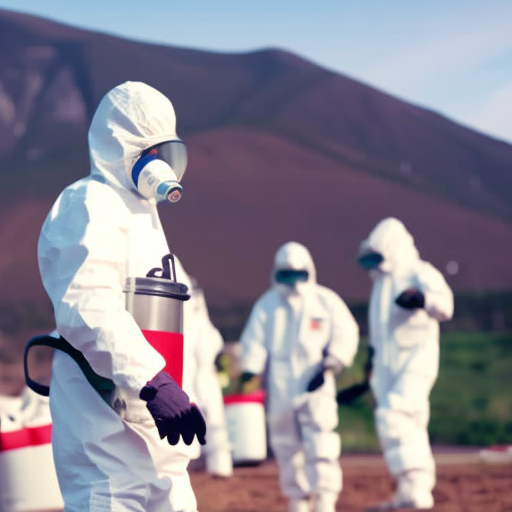Hazardous Waste Management: Ensuring Safe Disposal and Environmental Protection
Hazardous waste management refers to the process of handling, treating, and disposing of waste materials that pose a significant risk to human health and the environment. This includes waste generated by industries, healthcare facilities, laboratories, and households. Effective management of hazardous waste is crucial to prevent contamination of air, water, and soil, and to protect public health.
Types of Hazardous Waste
Hazardous waste can take various forms, including liquids, solids, gases, and sludges. It can be classified into four main categories: ignitable, corrosive, reactive, and toxic. Ignitable waste refers to materials that can easily catch fire, such as solvents and gasoline. Corrosive waste includes substances that can corrode or dissolve materials, like acids and bases. Reactive waste is characterized by its instability and potential for explosive reactions. Toxic waste contains substances that can cause harm to living organisms, such as heavy metals and certain chemicals.
Hazardous Waste Management Process
The management of hazardous waste involves several steps to ensure safe disposal and minimize environmental impact. These steps include waste identification, segregation, storage, transportation, treatment, and disposal.
The first step in hazardous waste management is waste identification. This involves determining whether a waste material meets the criteria for hazardous waste classification. Once identified, the waste is segregated based on its characteristics and compatibility with other waste materials. Segregation helps prevent reactions between incompatible substances and ensures proper handling and treatment.
After segregation, hazardous waste is stored in appropriate containers or storage facilities. These containers must be designed to withstand the specific hazards associated with the waste. Proper labeling and documentation are essential to ensure the safe handling and tracking of hazardous waste.
Transportation of hazardous waste requires compliance with strict regulations to prevent accidents and spills. Specialized vehicles and trained personnel are employed to transport the waste to treatment or disposal facilities. During transportation, the waste must be secured and protected to prevent leakage or release.
Treatment is a crucial step in hazardous waste management. It involves various processes to reduce the toxicity or volume of the waste. Common treatment methods include physical, chemical, and biological processes. Physical methods include filtration, evaporation, and incineration. Chemical treatments involve neutralization or precipitation of hazardous substances. Biological treatment uses microorganisms to break down organic waste.
Once treated, hazardous waste is disposed of in a manner that minimizes its impact on the environment. Disposal methods include landfilling, deep well injection, and incineration. Landfilling involves burying the waste in specially designed facilities that prevent contamination of soil and groundwater. Deep well injection involves injecting the waste deep underground, where it is isolated from the environment. Incineration is the process of burning the waste at high temperatures to reduce its volume and destroy hazardous substances.
Regulations and Challenges
Hazardous waste management is subject to strict regulations to ensure compliance and protect human health and the environment. These regulations vary from country to country but generally include requirements for waste characterization, storage, transportation, treatment, and disposal.
Challenges in hazardous waste management include the proper identification and classification of waste, the development and implementation of effective treatment technologies, and the enforcement of regulations. Additionally, the globalization of trade and the movement of hazardous waste across borders pose challenges in tracking and regulating waste disposal.
In conclusion, hazardous waste management is a critical process that aims to protect human health and the environment from the harmful effects of hazardous waste. By following proper waste identification, segregation, storage, transportation, treatment, and disposal procedures, we can ensure the safe handling and disposal of hazardous waste. Strict regulations and ongoing research and development efforts are essential to address the challenges associated with hazardous waste management and promote sustainable practices.












